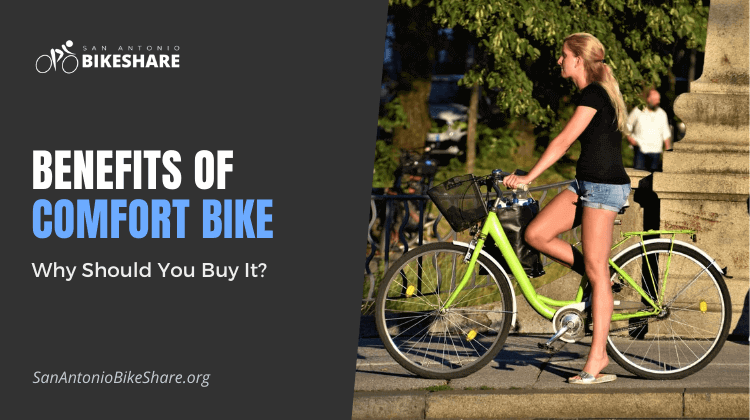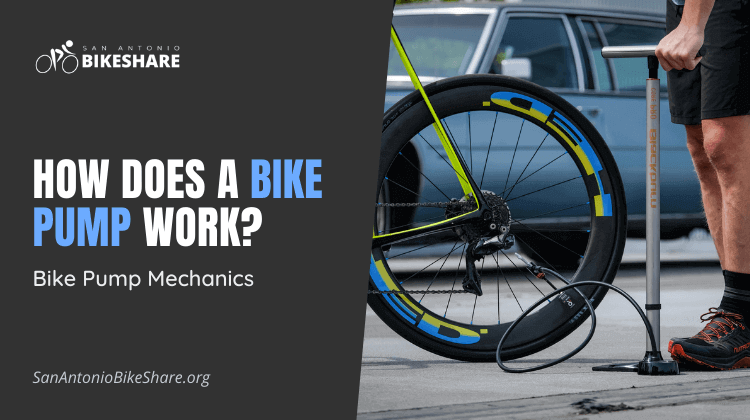Reasonable Distance to Bike to Work? How to Judge It?
Are you wondering what is the reasonable distance to bike to work? Let’s explore.
Commuting by bike to work may be the ideal option if you want to save money on gas or other types of transportation. It is also a fantastic way to stay fit and active if you work at a desk. While the idea of riding to work is tempting, it needs some thinking and dedication.
What Is A Reasonable Distance to Ride A Bike to Work?
One of the most typical questions you could have if you’re considering cycling to work is what is the reasonable distance to bike to work?
Because it is dependent on a multitude of factors, the answer to this question is inconclusive. Based on my own experience, the following are the most common criteria for most riders:
- Their Physical Fitness
- The Route they will need to ride on
- Bike Type
- The amount of time available
Let me elaborate on it a little bit more:
I used to ride my bike to work and it took me around 45 minutes to ride 5 miles and the same amount of time to come home. By the time I got home, I was exhausted. At first, I figured that was all there was to it. For a 5-mile ride, my “reasonable distance to bike to work” was 45 minutes.
However, after a few weeks of everyday bike commuting, I noticed that my fitness level had improved. I was able to take on more, and my speed increased as well. I can easily cover 5 miles on my bike in 25-30 minutes right now. There’s no reason to get worked up!
This, however, only emphasizes how difficult it is for someone on the outside to determine what is a reasonable distance for “You” to ride to work. However, this does not rule out the possibility of finding it out before trying it.
We’ll discuss what constitutes a reasonable distance to cycle to work in this piece, as well as other related topics. Look down below if you merely need a quick response.
In a nutshell:
For most people of average fitness, a daily bike commute to work of 5-10 miles is a reasonable distance. Cycling 5–10 miles in the average person’s physical condition takes no more than 60 minutes. Expert bike commuters, on the other hand, may disagree because they can do it in much less time.
As previously said, the reasonable distance to bike to work and time will vary from person to person depending on a variety of factors
What Is Your Current State Of Health And Fitness?
Let’s look at the factors that affect the reasonable distance to bike to work.
When planning your bike commute, one of the most important factors to consider is your health and fitness level. The first thing to remember is that your ‘cycle commuting pace’ should not be compared to that of other riders. As a result, whereas some people can effortlessly commute 20 miles on their bike, others struggle.
If you regularly go to the gym and consider yourself fit, you can easily bike up to 15 kilometers to work. For elite athletes, the distance is significantly greater. They can easily bike up to 30 kilometers without becoming fatigued, and they may arrive early.
Biking 10 kilometers, on the other hand, may be challenging if you haven’t exercised in a while.
The good news is that riding your bike to work can help you lose weight and get in shape. Every day you make the long, arduous drive to work, you improve your physical fitness. Cycling is one of the best types of exercise for boosting overall health and strengthening various body regions, so you’ll be able to improve your fitness level on a daily basis.
Once you start riding to work, you should expect the ride to get easier as your endurance and strength improve.
To discover more about your present fitness level, start by taking a trial bike ride to work. To avoid having to rush anything, test-ride on your off days. Take this test ride to see how far and how long you can go.
Make sure you don’t take it easy on your way to work because you’ll need to carefully examine your performance and time because this is something you’ll be doing every day. You should also take advantage of this time to familiarize yourself with the route to work and calculate the best pace for getting on time. Once you know how long it takes you to cycle to work at an average speed, you can begin to improve.
A Word Of Advice To The Wise:
It’s possible it won’t be a one-night sensation. You will notice a rise in your fitness level as well as your biking speed if you begin bicycling regularly.
The Weather And The Route
Do people bike on a variety of routes? Some may have to bike uphill, while others may have to deal with heavy traffic or terrible weather. As a result, depending on the type of Route you bike on, your “reasonable distance” may differ from others.
Cycling five miles on a level road, for example, could take 30 minutes. It may take twice as long to bike five miles on a route with more elevation and heavier traffic. As a result, the route conditions are critical to your riding experience.
Climate conditions also play an important effect. Keep in mind that while strong tailwinds will assist you to accelerate, headwinds will slow you down. As a result, on your first test ride to work, you’ll be able to accurately estimate how long it’ll take under these conditions.
During your first ride, try to obtain as much information as possible. Is there a bike lane that has been designated? Is the path ascending, descending, or level? Do you have to deal with traffic all of the time? What are the forecasted weather conditions?
The majority of bikers said their commute lasted anywhere from 40 to 75 minutes, depending on the weather.
Type of Bike
The quality, duration, and simplicity of your commute are all affected by the type of bike you ride for commuting. This isn’t to say that you have to ride the most costly bikes or the newest models. In the majority of cases, a reasonable budget-friendly hybrid bike will suffice.
In reality, almost any bike can be used to commute to work. Before you even consider commuting by bike, there are three characteristics you should make sure your bike has. They should be able to:
- Make sure your bike is comfortable. Before you buy a bike, take it for a test ride to evaluate how comfortable it is
- Choose a bike that is the right size for you. If your bike is too big or too little, it will make your commute difficult
- Don’t get a bike that is either too cheap or too heavy
You should consider all of the above factors because you are most likely to travel on the same bike every day. The distance will surely be easier to handle if you ride the proper bike. It will not only help you boost your speed, but it will also improve the comfort of your daily journey.
With that in mind, you may use the three factors listed above to determine how far you should ride your bike to work. If you’re just getting started with bike commuting, though, 5-10 miles is a reasonable place to start.
So, if you’re thinking about riding your bike to work, here are some tips to get you started:
Time
Make a specific schedule for yourself. Set aside at least 60 minutes for biking to work if you’re a novice. If you don’t, you may find yourself rushing to make it to your appointment on time, which is unproductive. It’s pointless to try to save money by commuting your bike to work only to arrive weary and unable to do your job. So take your time and relax!
To guarantee you have enough time to bike to work, leave an hour sooner from home. Ride comfortably and at your own pace. With each passing day, your body will become accustomed to it. Your speed will improve as a result.
Helmet
Helmets are intended to keep you safe and may even save your or a loved one’s life. It’s always better to be safe than sorry, so put your helmet on before you start riding your bike. If you don’t have one already, the options on this list for the best bike helmet with excellent portability are worth considering.
Backpack
Investing in a decent bicycle backpack is the most convenient way to carry all of your essentials when biking to work. Check to see if your luggage is excessively hefty. Don’t forget to bring a water bottle. If you plan on changing your clothes at work, you can also bring them in a backpack.
To avoid any weight on your shoulder, you can easily connect detachable racks or baskets to the front or back of your bike.
Remedy For Sweating
Sweating is an unavoidable side effect of any moderate to vigorous physical activity, so embrace it. Short commutes of 2-4 miles, on the other hand, do not cause excessive sweating. An electric bike, on the other hand, maybe the best option for you if your journey is between 6 and 10 miles long and you don’t want to sweat.
Light, breathable clothing is advised if you love the thrill of manually pedaling. To get rid of any scents generated by perspiration, use antibacterial soap and deodorant.
FAQs
Here are some of the most often asked questions, which you may need answers to:
When Buying A Commuter Bike, What Should You Look For?
The size is the first thing to double-check. Check to see if it’s a good fit for you. A lightweight bike is also more practical and enjoyable to ride than a large one. Check out our review for the best commuter bikes.
What Is The Maximum Distance You Can Ride Your Bike To Work?
Regular back-and-forth cycling for five or even six days in a row is required when cycling to work. As a result, short bike distances of up to 10 kilometers are considered reasonable. Biking more than 10 miles per day, on the other hand, may be too much for most people of normal fitness. As a result, it’s best to start by alternating days to get used to the distance.
When Riding Our Bikes To Work, What Precautions Should We Take?
Always put on your helmet before getting on your bike. If you have to travel many routes to work, choose the one with the least amount of traffic. Be aware of the traffic rules and follow them. Keep a modest first-aid kit and a whistle with you in case of an emergency.
Conclusion
Hopefully, you would have found out by now what the reasonable distance to bike to work is.
Biking to work is enjoyable and cost-effective, plus it allows you to stay fit and stress-free. You must, however, anticipate some hiccups along the way. There are days when you don’t feel like riding your bike. You must, however, motivate yourself. Recall why you got started in the first place. Is it for the sake of living a healthy lifestyle? Is it because you’re attempting to cut costs? Is it due to your sincere concern for the environment?
Make it a point to stay motivated every day, no matter what your motivation is. As a result of the muscle straining, you may have weariness and body pains in the early days, especially in your legs. Don’t worry, though! With frequent biking, fatigue and soreness will progressively fade away.







